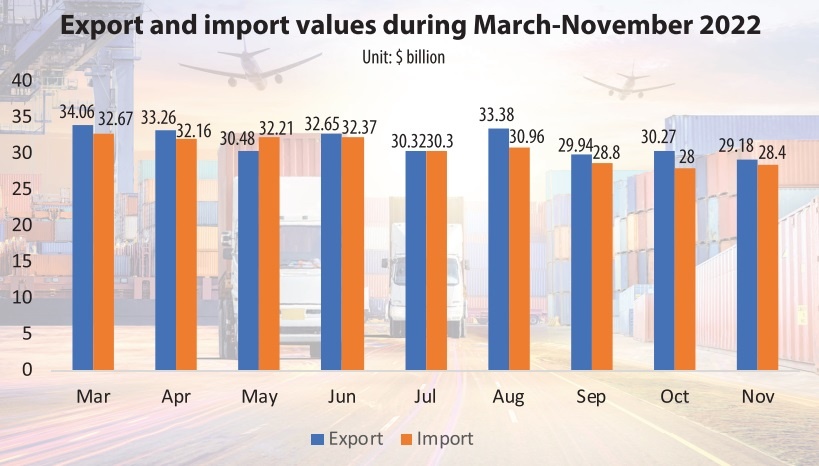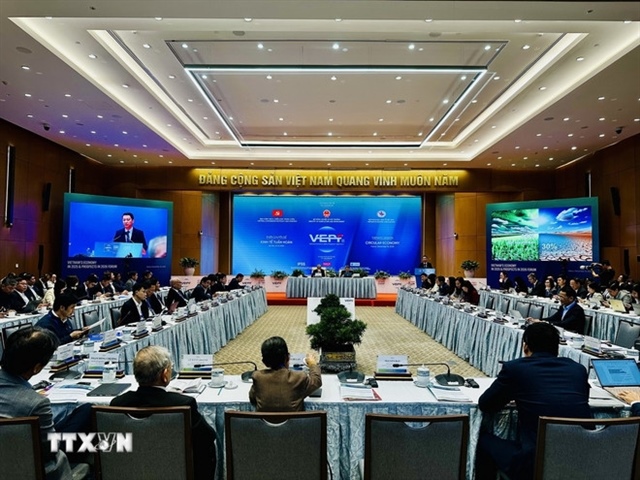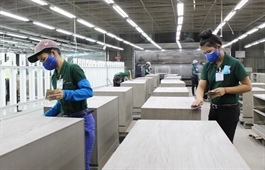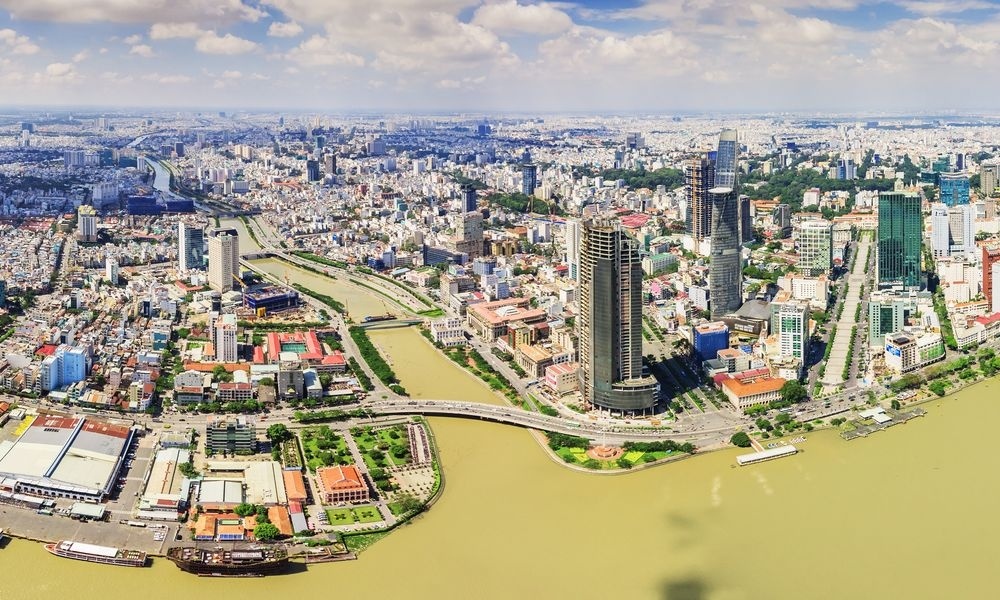Economy prepares for external strain
Economy prepares for external strain
Vietnam’s economic growth prospects next year are expected to face tough challenges including slowdown in exports and investment, caused by various global fluctuations.

The National Assembly has decided on a goal for economic growth of 6.5 per cent for next year due to its concerns over prolonged and new risks within and outside Vietnam.
Francois Painchaud, resident representative for Vietnam and Laos at the International Monetary Fund (IMF), said, “With strong growth through September, the GDP growth forecast for Vietnam in 2022 could be moved from 6 to 7-7.5 per cent. However, due to slowing external demand and tighter financial conditions, the growth forecast for 2023 is 5.8 per cent.”
At last week’s government cabinet meeting for Vietnam’s socioeconomic performance in the year so far, it was reported that the economy’s growth for at least the next 12 months will face major challenges such as the ongoing Russia-Ukraine conflict undermining the global economy. Moreover, there have been slumps in demand in some of Vietnam’s key trade partners such as the EU and the US, with its export-import turnover doubling its GDP.
The Ministry of Industry and Trade reported that Vietnam’s total 11-month goods export-import turnover is estimated to stand at $673.8 billion – up 11.8 per cent against that in the corresponding period last year. Export turnover touched $342.2 billion – an on-year rise of 13.4 per cent, and the import turnover reached $331.6 billion, increasing 10 per cent.
However, such an attainment has revealed some signal of risks.
“In fact, the growth of exports in 2022 so far largely comes from the increase in prices, not the rise in volume,” Painchaud noted. “Moreover, enterprises have seen the number of orders dropping sharply due to weak demand, which is expected to last until the first quarter of next year. Exports will not be able to contribute to the GDP growth of Vietnam in 2023 as much as in 2022.”
General Statistics Office figures indicated that due to high inflation in numerous big economies such as the US and European countries, and sharp falls in goods demand, export and import values on a monthly basis in the past three months have dropped significantly to about $29-30 billion of export turnover and more than $28 billion of import turnover, from $32-34 billion and $30-32 billion, respectively, between March and August. This situation is forecast to continue, lasting until the first or second quarter of 2023.
Foreign direct investment (FDI) mobilisation is also facing some challenges, according to the Ministry of Planning and Investment (MPI). Newly registered FDI in Vietnam has decreased in 2022, and exports of advantageous items of foreign-invested enterprises are on the downtrend.
“This is caused by the high interest rates in key nations, and the trend of supply bottlenecks continues,” said Tran Toan Thang, director of Industry and Enterprise Economic Forecasting at the MPI’s National Centre for Socioeconomic Information and Forecast. “Economic flows for investment in Vietnam may not recover quickly.”
According to the MPI’s Foreign Investment Agency, total FDI inflows in every month of this year still reported some decrease by around 5-15 per cent on-year, despite the pandemic outbreak last year and all restrictions removed earlier this year. Of this, newly registered capital in the first 11 months declined by 18 per cent on-year, much better than the outcome in previous months at 23.7 per cent or 43 per cent.
With those influencing factors, Vietnam’s economy in 2023 could see two scenarios, according to Thang. “In the first scenario, economic growth may be only 6-6.2 per cent if risk factors outweigh the established recovery trend in 2022. More optimistically, the second would see economic growth reach 6.5-6.7 per cent if the recovery process is more favourable and the impacts from the international context are not too critical,” Thang analysed.
In 2022, Vietnam outperformed other countries in the region following a rebound in consumer spending, several quarters of robust export growth, and the gradual return of international tourism. GDP growth in Q3 exceeded all forecasts, estimated to increase by 13.67 per cent on-year, bringing GDP growth in the first nine months of 2022 to 8.83 per cent. Inflation was still controlled below the set target, at 4 per cent.






















